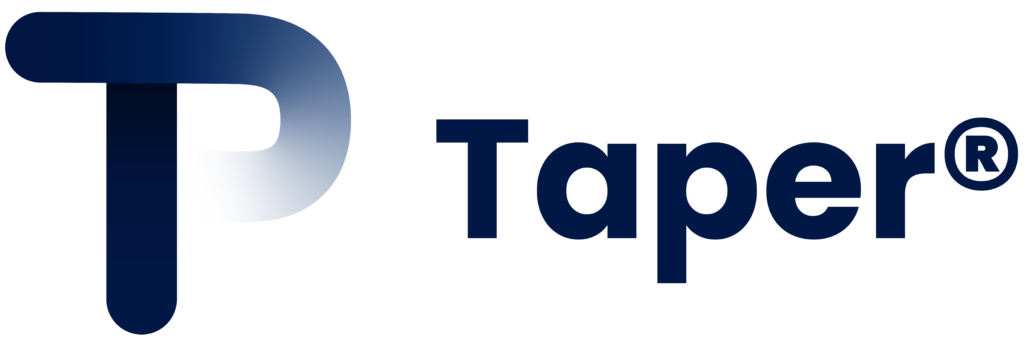Integrating supply chain finance with existing accounting systems requires connecting your financial software with supply chain financing platforms through APIs, ensuring data synchronisation, and establishing automated workflows. This process involves system compatibility assessment, user access configuration, and thorough testing to create seamless operation between your accounting infrastructure and financing solutions.
Understanding supply chain finance integration with accounting systems
Supply chain finance integration represents a significant advancement in how SMEs manage their international trade operations. When you connect supply chain finance solutions with your existing accounting infrastructure, you create a unified financial ecosystem that streamlines cash flow management and provides real-time visibility into your business operations.
For businesses engaged in global trade, this integration becomes particularly valuable. Your accounting system transforms from a simple record-keeping tool into a dynamic platform that manages supplier payments, tracks financing costs, and monitors working capital optimisation across multiple currencies and jurisdictions.
The integration process fundamentally changes how you approach financial operations. Rather than managing separate systems for accounting and supply chain financing, you gain a consolidated view that helps you make informed decisions about cash flow, supplier relationships, and growth opportunities.
What is supply chain finance and how does it work with accounting systems?
Supply chain finance is a financing solution that optimises cash flow by allowing businesses to extend payment terms with suppliers whilst providing those suppliers with early payment options. When integrated with accounting systems, it creates automated workflows that manage these transactions seamlessly.
The core mechanism works through your accounting software identifying approved invoices and automatically presenting them to the financing platform. Your suppliers can then choose to receive early payment at a discount, whilst you benefit from extended payment terms that improve your working capital position.
This integration provides real-time visibility into your entire payment process. Your accounting system tracks which invoices are financed, monitors associated costs, and maintains accurate records of all transactions. The system automatically updates payment statuses, adjusts cash flow forecasts, and ensures compliance with accounting standards.
For international businesses, this integration becomes particularly powerful when combined with multi-currency capabilities. You can manage supplier financing across different currencies whilst maintaining accurate exchange rate tracking and consolidated reporting in your base currency.
How do you prepare your accounting system for supply chain finance integration?
Preparing your accounting system begins with a comprehensive compatibility assessment to ensure your current software can support the integration requirements. Most modern accounting platforms offer API connectivity, but you’ll need to verify the specific technical specifications required by your chosen financing provider.
Start by reviewing your current chart of accounts structure. You’ll need to establish specific account codes for supply chain finance transactions, including financing fees, early payment discounts, and any currency adjustments. This preparation ensures accurate tracking and reporting once the integration is active.
User access configuration requires careful planning. Determine which team members need access to financing functions and establish appropriate permission levels. Your accounts payable team will likely need different access rights compared to senior management who require reporting capabilities.
Data mapping represents a critical preparation step. You’ll need to identify how supplier information, invoice data, and payment terms in your accounting system correspond to the fields required by the financing platform. This mapping ensures smooth data flow between systems.
Finally, ensure your accounting software is updated to the latest version and that you have adequate backup procedures in place before beginning the integration process.
What are the key steps to integrate supply chain financing with existing accounting software?
The integration process begins with establishing API connections between your accounting software and the supply chain finance platform. This technical connection enables automated data exchange and ensures real-time synchronisation between systems.
Configure data synchronisation protocols to determine which information flows between systems and how frequently updates occur. Typically, this includes supplier master data, invoice details, payment terms, and transaction statuses. Set up automated synchronisation schedules that align with your business processes.
Workflow automation setup involves creating rules that determine which invoices are eligible for financing. You might establish criteria based on supplier approval status, invoice amounts, or payment terms. These automated workflows reduce manual intervention and ensure consistent processing.
Testing procedures require systematic verification of all integration points. Start with a small group of suppliers and limited transaction volumes to verify that data flows correctly, calculations are accurate, and reporting functions properly. Gradually expand the scope as you confirm system stability.
Monitor the integration closely during the initial weeks, paying particular attention to data accuracy, processing times, and any error messages. Document any issues and work with your technical support team to resolve them promptly.
What challenges might you face when integrating supply chain finance with accounting systems?
Data format incompatibilities represent one of the most common integration challenges. Your accounting system may structure supplier information or invoice data differently than the financing platform expects. Address this by working with your IT team to create data mapping protocols that translate information between systems accurately.
Security considerations require careful attention, particularly when dealing with sensitive financial data and supplier information. Ensure that all data transmissions are encrypted and that access controls are properly configured. Regular security audits help maintain protection standards.
User training requirements often exceed initial expectations. Your team needs to understand not only the new workflows but also how to troubleshoot common issues and interpret new reporting formats. Invest in comprehensive training programmes that cover both technical aspects and business processes.
Compliance issues can arise when integrating systems, particularly for businesses operating across multiple jurisdictions. Ensure that your integrated system maintains proper audit trails, meets regulatory reporting requirements, and handles tax implications correctly.
System performance may be affected during the integration process. Monitor processing speeds and ensure that the additional data exchange doesn’t impact your accounting system’s performance during peak usage periods.
Key takeaways for successful supply chain finance and accounting system integration
Successful integration requires thorough planning and a phased implementation approach. Begin with a comprehensive assessment of your current systems and clearly defined objectives for what you want to achieve through integration.
Maintain close collaboration between your finance team, IT department, and the financing platform provider throughout the process. Regular communication helps identify potential issues early and ensures that the integration meets your specific business requirements.
Focus on data quality and accuracy from the outset. Clean, well-structured data in your accounting system translates to smoother integration and more reliable automated processes. Invest time in data cleansing before beginning the integration.
The long-term benefits for SMEs include improved cash flow management, reduced manual processing, enhanced supplier relationships, and better financial visibility. These advantages become particularly pronounced for businesses engaged in international trade, where complex multi-currency transactions benefit from automated processing.
Regular system maintenance and monitoring ensure optimal performance over time. Establish procedures for updating integration settings, monitoring data quality, and addressing any technical issues that arise. This ongoing attention maximises your return on investment and maintains system reliability.
For businesses looking to optimise their international payments alongside supply chain finance integration, professional guidance can help navigate the complexities of multi-currency operations and ensure seamless financial management across global markets.
Frequently Asked Questions
How long does it typically take to fully integrate supply chain finance with an accounting system?
The integration timeline varies depending on system complexity and business size, but typically ranges from 4-8 weeks. This includes initial setup (1-2 weeks), testing phase (2-3 weeks), user training (1 week), and gradual rollout with monitoring (2-3 weeks). Businesses with more complex multi-currency operations or custom accounting configurations may require additional time.
What happens if my accounting system goes offline during a supply chain finance transaction?
Most modern supply chain finance platforms include failsafe mechanisms to handle system downtime. Transactions in progress are typically queued and processed once connectivity is restored. However, you should establish backup procedures with your financing provider, including manual processing protocols for critical payments and clear communication channels to notify suppliers of any delays.
Can I integrate supply chain finance if I'm using older accounting software that doesn't have API capabilities?
Yes, though your options may be more limited. Many financing providers offer file-based integration methods using CSV or XML exports from your accounting system. Alternatively, you might consider upgrading to a more modern accounting platform or using middleware solutions that can bridge the gap between legacy systems and financing platforms.
How do I handle currency exchange rate fluctuations in an integrated supply chain finance system?
The integrated system should automatically capture exchange rates at the time of each transaction and update your accounting records accordingly. Set up your system to use real-time exchange rate feeds and establish clear policies for rate lock-in periods. Ensure your chart of accounts includes specific codes for foreign exchange gains and losses to maintain accurate financial reporting.
What are the most common mistakes businesses make during the integration process?
The top mistakes include insufficient user training leading to process errors, inadequate testing with small transaction volumes before full rollout, poor data cleansing resulting in synchronisation issues, and failing to establish clear approval workflows for financed invoices. Many businesses also underestimate the importance of ongoing system monitoring and maintenance after go-live.
How can I measure the ROI of integrating supply chain finance with my accounting system?
Track key metrics including time saved on manual invoice processing, reduction in payment processing errors, improved cash flow cycle times, and cost savings from early payment discounts. Compare financing costs against traditional credit facilities and measure improvements in supplier relationship scores. Most businesses see positive ROI within 6-12 months through operational efficiencies and better working capital management.
What should I do if suppliers are reluctant to participate in the integrated financing programme?
Start by clearly communicating the benefits to suppliers, including faster payment options and improved cash flow predictability. Provide training materials and dedicated support during onboarding. Consider offering incentives for early adopters and ensure the system is user-friendly from the supplier perspective. Address concerns about data security and demonstrate how the integration maintains confidentiality while improving payment efficiency.



